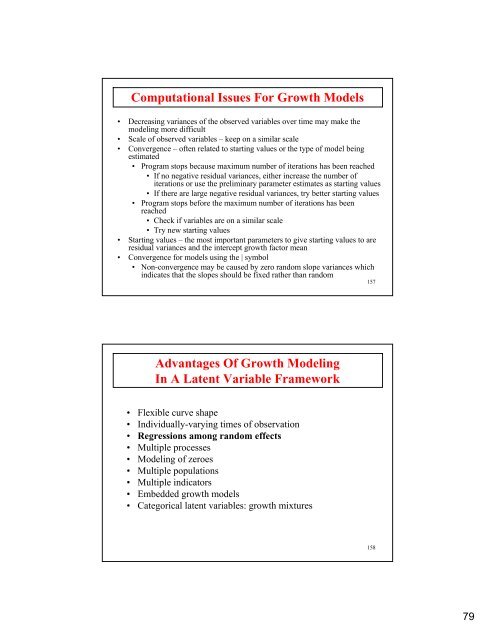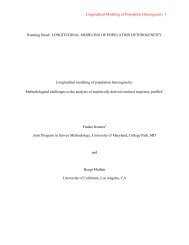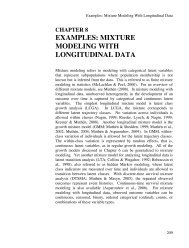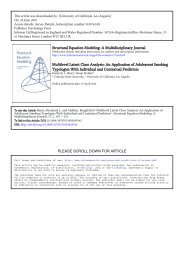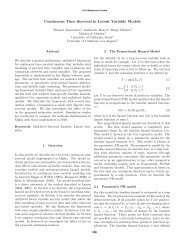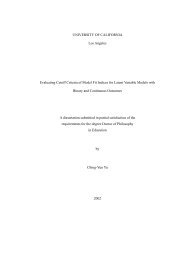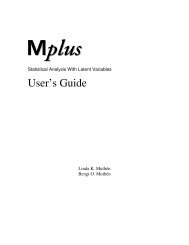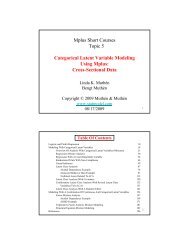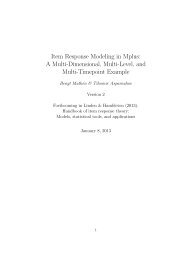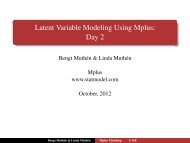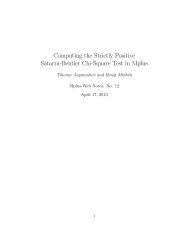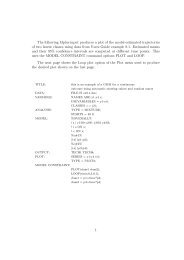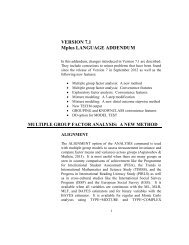Introductory And Intermediate Growth Models - Mplus
Introductory And Intermediate Growth Models - Mplus
Introductory And Intermediate Growth Models - Mplus
Create successful ePaper yourself
Turn your PDF publications into a flip-book with our unique Google optimized e-Paper software.
Computational Issues For <strong>Growth</strong> <strong>Models</strong>• Decreasing variances of the observed variables over time may make themodeling more difficult• Scale of observed variables – keep on a similar scale• Convergence – often related to starting values or the type of model beingestimated• Program stops because maximum number of iterations has been reached• If no negative residual variances, either increase the number ofiterations or use the preliminary parameter estimates as starting values• If there are large negative residual variances, try better starting values• Program stops before the maximum number of iterations has beenreached• Check if variables are on a similar scale• Try new starting values• Starting values – the most important parameters to give starting values to areresidual variances and the intercept growth factor mean• Convergence for models using the | symbol• Non-convergence may be caused by zero random slope variances whichindicates that the slopes should be fixed rather than random157Advantages Of <strong>Growth</strong> ModelingIn A Latent Variable Framework• Flexible curve shape• Individually-varying times of observation• Regressions among random effects• Multiple processes• Modeling of zeroes• Multiple populations• Multiple indicators• Embedded growth models• Categorical latent variables: growth mixtures15879


